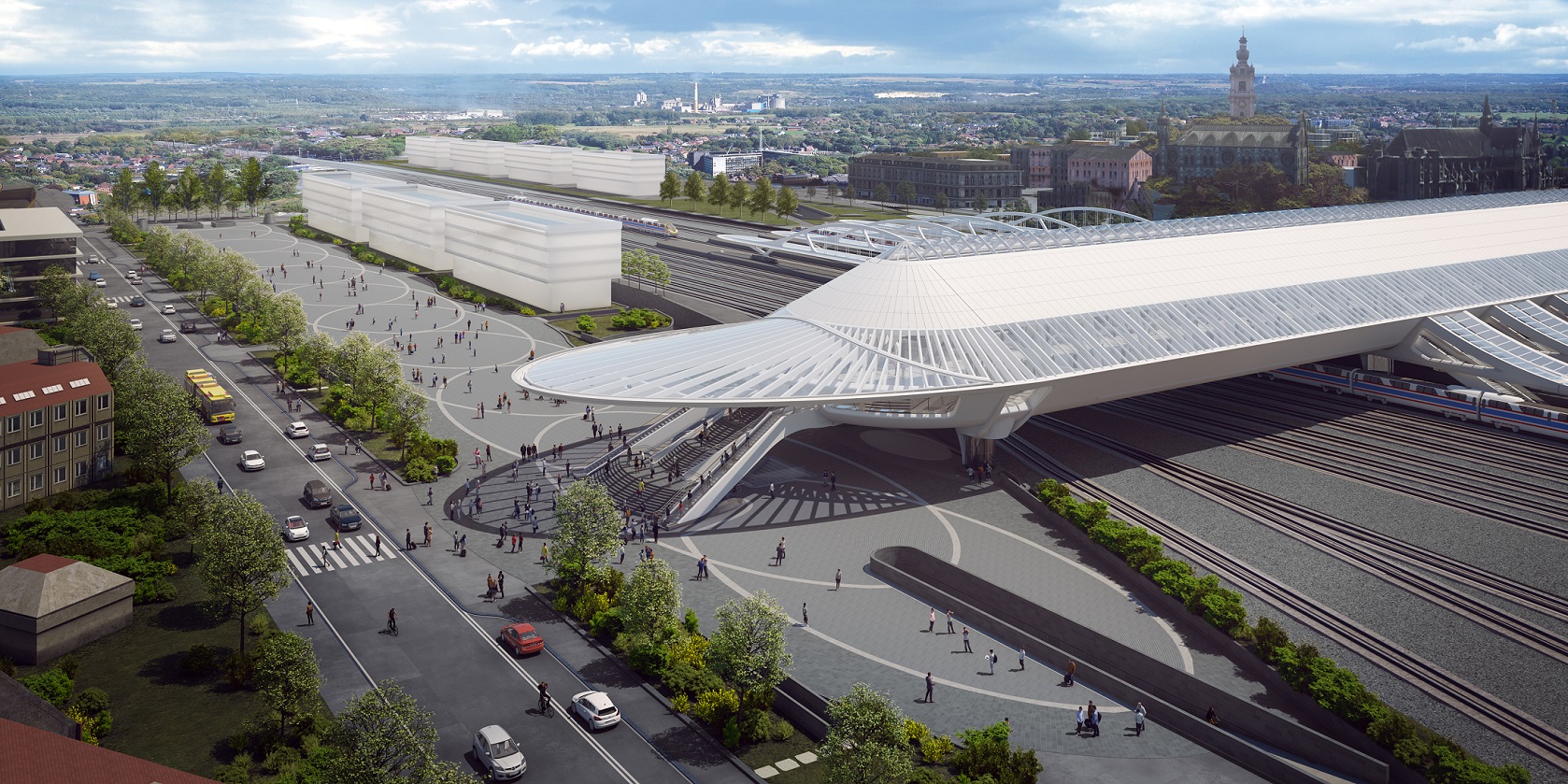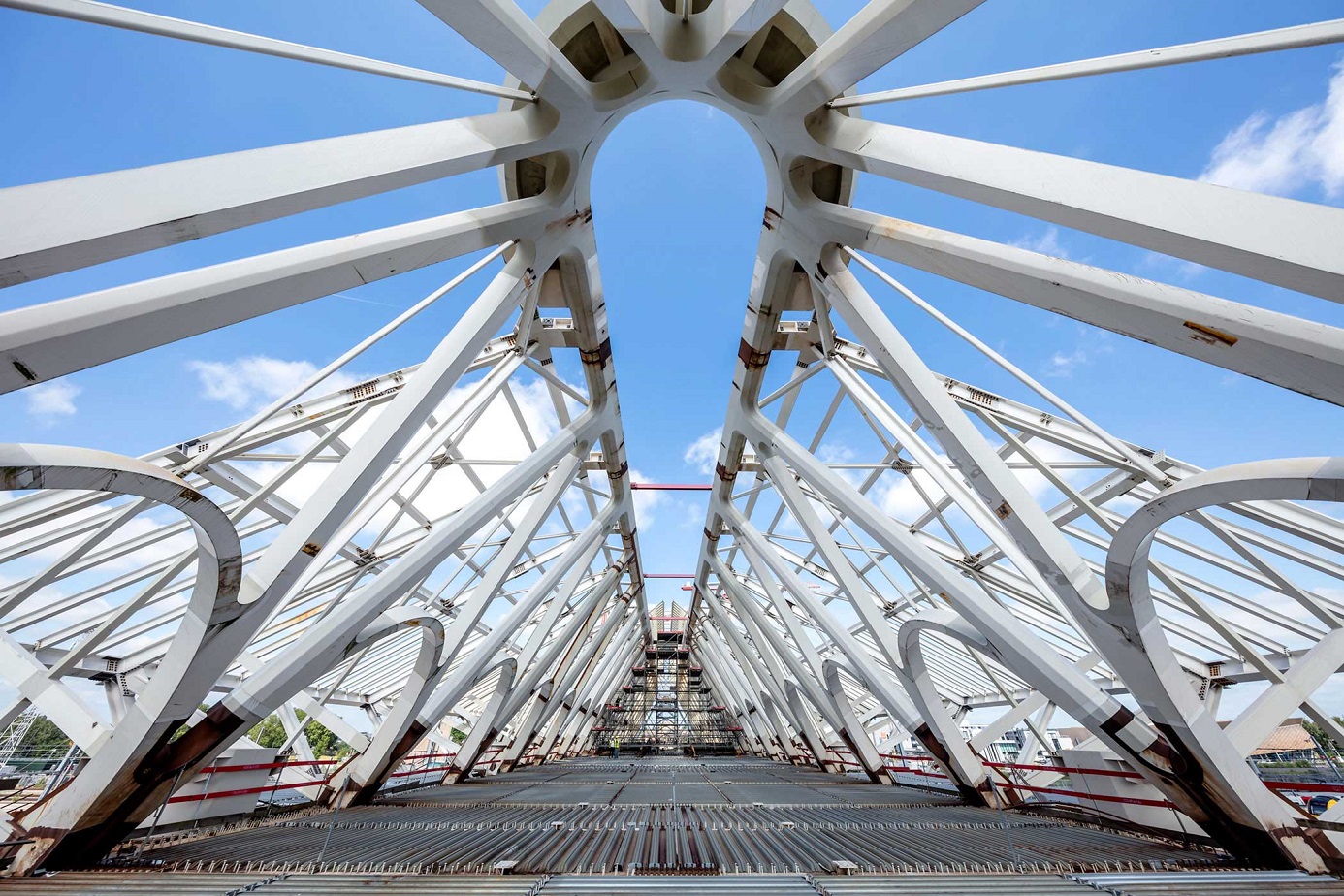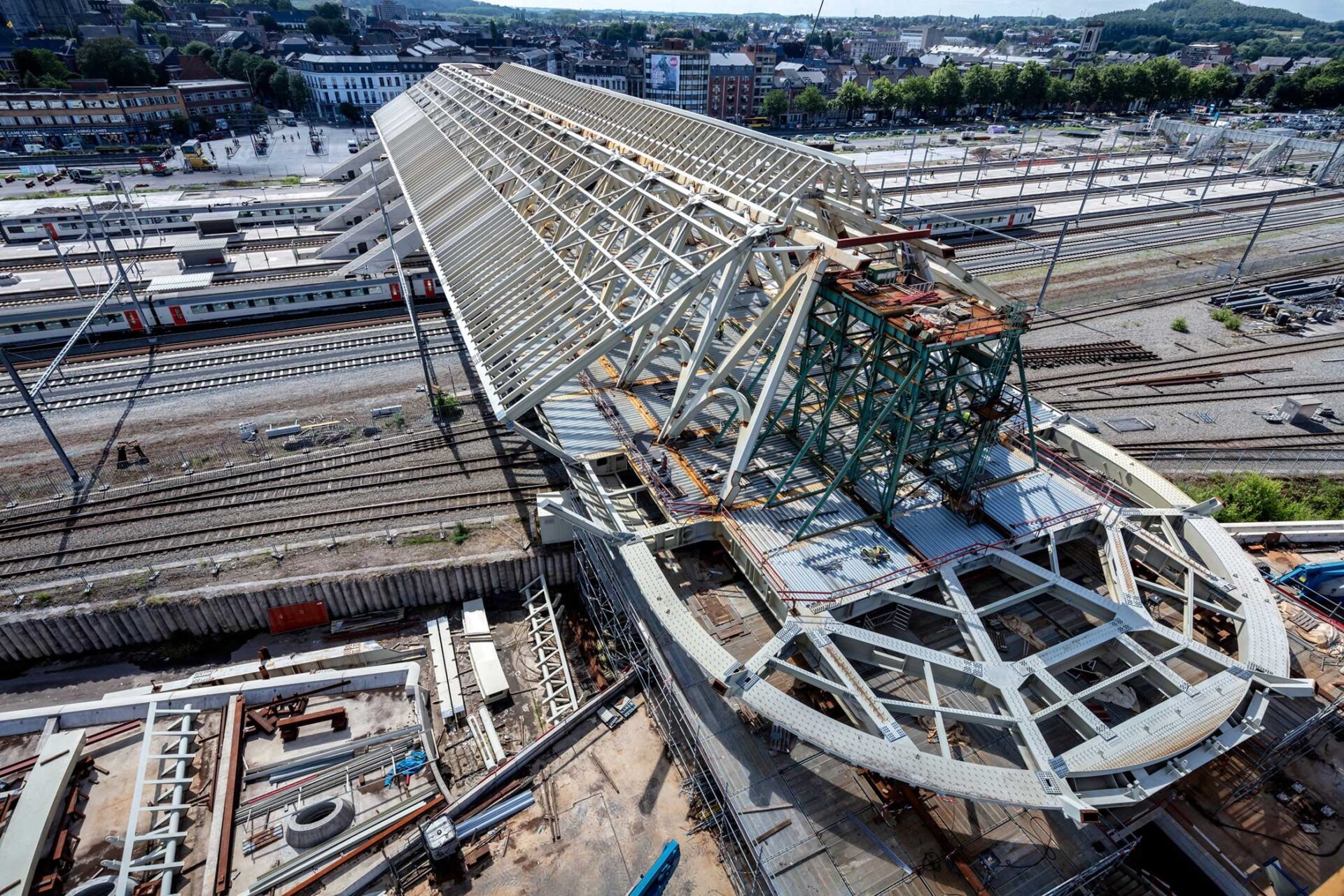Mons, the capital of Belgium’s Hainaut province and the country’s eighth largest city is famous for its annual Ducasse procession featuring a dragon (Doudou), a stunning UNESCO-recognised belfry, the new BAM modern art museum, a beautiful cathedral and one of Belgium’s most impressive town squares.
Now it is set to add to its charms with a new attraction: a grandiose, multimodal station designed by Spanish master architect Santiago Calatrava, combining trains, buses, taxis and bicycles.
This arrestingly aerodynamic bright white landmark looks like it belongs in a science fiction movie. A cross between an arrow and a train, it is expected to draw visitors the same way as Calatrava’s Liège-Guillemins station has done.
But erecting the gargantuan steel structure and all its accessories has come at an astronomical cost: it has ballooned to nearly €332 million, according to a Court of Auditor’s report released on September 21. This is nine times the initial €37 million budget for the original plan by the Belgian railway operator SNCB/NMBS.
That’s not to mention the delays. The station was supposed to be completed by 2012 and then 2015, to coincide with Mons Capital of Culture. Officials insist the station will be ready by end of 2023, after which Mons risks losing out on some €12 million worth of subsidies to help rebuild areas of the city overturned to build the station. But given the delays so far, who would bet on them meeting the deadline?
Nicolas Parent, a member of federal parliament with the Ecolo (Green) party which commissioned the Court of Auditor’s report, has lambasted the overspending. “At a time when households have to tighten their belts, the mismanaged mess that is the construction site of Mons station is indecent, even obscene,” Parent says.
The report is damning: a lack of transparency, no second competition after the plans changed radically, illegal public contracts and no guarantee of overall control of the project. The original scheme was for a renovation of the existing station and a bridge linking the old city centre to new parts of Mons (including Les Grands Prés shopping mall and the Daniel Liebeskind-designed congress centre), but it mushroomed into a mammoth new station/bridge concept, with little or no oversight.

What it should look like
“The report shows an extreme and disastrous management of a project that has clearly broken many rules,” Parent says. “The budgetary choices for the Mons project undermined fundamental investment for maintaining the quality of the network, the quality of welcome to passengers, and accessibility.”
Parent points out that Mons is only Belgium’s 16th biggest station in terms of traveller numbers. The most recent figures show the station saw around 10,000 passengers a day in December 2020, compared to Ottignies with 23,000 and Liège with around 18,000. In short, Parent says, Mons did not need such a gargantuan project so different to the original plan.
Cathérine Fonck, leader of the pressure group Les Engagés says the vast sums of money funnelled to the Mons station are an outrage, considering the renovation needs of many other stations in Belgium – and the demand for more trains.
After all, the renovation of Saint-Ghislain station in 2020, just a 15-minute train ride away, sporting a new entrance hall, only cost €3 million. The €324 million for Mons could have rejuvenated at least 108 such stations.
Fonck wants the Belgian government, including Mobility Minister Georges Gilkinet, to take legal action. “He cannot just put it in a drawer, saying the management of the project was not ideal,” she says. “He must take the matter to court and file a civil suit. This report has shown the enormous cost, incredible delays and serious irregularities in the project – including the choice of architect.”
Showcase for the city?
The original December 2004 plan was only to renovate the charming 1950s modernist station designed by local architect René Panis, complete with a striking Jacques d’Hondt fresco of the Mons-Borinage region. And it was supposed to take just 400 days, as shown on billboards still surrounding the station, not drag on for years.
But the Mons mayor at the time, Elio Di Rupo, who was also the leader of the Socialist Party (PS), argued that this was an opportunity to completely modernise the station and showcase the city. Di Rupo, who would later become Prime Minister, organised a competition in 2006 to create a footbridge over the tracks to link the old city to the developing site of Les Grands Prés, keeping the existing station.

The lines of the station/bridge
The competition was won by the ultra-prestigious Santiago Calatrava, famous not only for Malmo’s turning Torso tower, Valencia’s City of Arts and Sciences and New York’s World Trade Center Transportation Hub. However, for all the spectacle of Calatrava’s imposing designs, his constructions have invariably been marred by cost overruns, delays and litigation.
Calatrava also built the dramatic white Liège-Guillemins station, which opened in 2009 after years of construction hell. Even critics say the station has been a tourist asset for Liège, hosting cultural and recreational events and becoming a symbol of the economic revival of a region still strongly marked by the weight of the 20th century steel industry. Railway Terminal World named it one of the ten most beautiful in the world, alongside New York Grand Central, London Saint-Pancras and Antwerp Central.
These signature designs can have a transformational effect on cities, and Mons aimed for its station to have a similar positive impact. But does the monumental Mons station-to-be justify the pharaonic spending and massive delays?
It has five platforms: three ‘classic’, one for trains and buses, and another for buses and a drop-off point for cars and taxis; and two large underground car parks at either end of the bridge in the pedestrianised squares. It was billed to be a grand addition to the Capital of Culture in 2015, but instead, visitors had to use the temporary station as Calatrava’s was at the time little more than steel bars and scaffolding.
Defending the project at the Belgian Parliament on October 26, SNCB CEO Sophie Dutordoir assured MPs the station will be worth the wait: “I want to see the end of the works as soon as possible, that is to say, the end of 2023,” she said. “Mons will have a beautiful station, of a certain architectural quality, just like Liège, and I will certainly not stop the site for budgetary reasons.”
The SNCB, Calatrava’s office and the city of Mons all insist that this new station merits the time and money invested in it, linking the old and new city, and blending in with new roads and landscapes around the station and the squares (Léopold and Congrès) at either end of the bridge. Calatrava’s office says the original idea of a railway link was shelved because of “a decision taken in collaboration with the local authorities, who decided to integrate all transport systems in the project.”
They point to external events that added delays, like Italian steel contractor Cordioli going bankrupt in a key construction phase. The project was also hampered by convoluted operational procedures. For example, at least five companies have tried to finish the 185-metre steel frame – the centrepiece of Mons station – since construction started in 2014. But when a firm cannot complete the job, it stops work on the overall structure from continuing too, increasing project costs and delays.
And one factor leading to the demolition of the Panis station was the decision that putting all railway services directly on the bridge, rather than remaining in the existing building, was a better plan.
SNCB has also changed its decision-making procedures, promising that when it comes to the management, construction and renovation of stations, another Mons will not be appearing any time soon. “If we had to redo the Mons project, it would be certainly less ambitious with a more realistic timescale and a tighter budget,” SNCB Director General for Stations Patrice Couchard has said.
In Mons itself, locals are sceptical about their new station. Everyone I spoke to one Sunday in October – from a station worker to a Grand’ Place snail seller – said the station was unnecessary, and the money could have been used to renovate and improve other stations. Nor are they impressed by the Liège station, nicknamed the ‘bear pit’, criticised for being noisy and cold, with rust already setting in.
“The project was pointless and far too big,” local heritage worker Agnès Warocquier told me. “We should have reworked the old station, a great symbol of its time, and just added the bridge. And why take an architect from a sunny country to grey Belgium when we already have a Calatrava in Liege?”
In Mons, the station, which people are calling ‘Elio Di Rupo’s mausoleum’, is already being branded as a white elephant. Nearly 20 years after the project was mooted, visitors to the city still have to negotiate corrugated iron footbridges and a five-minute cramped walk from the temporary station down a plastic fenced-off pathway, lined with blocks of stone. There they reach Place Léopold, where the old Panis station, finally demolished in June 2013, used to stand.


